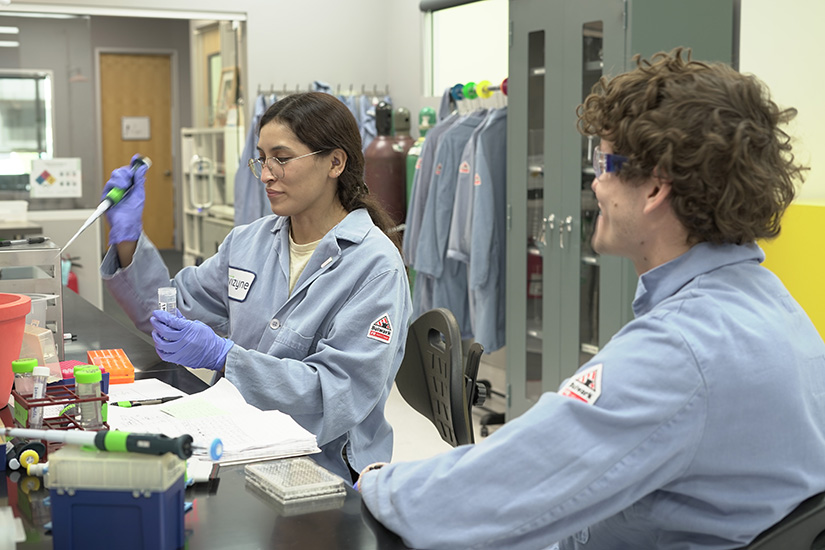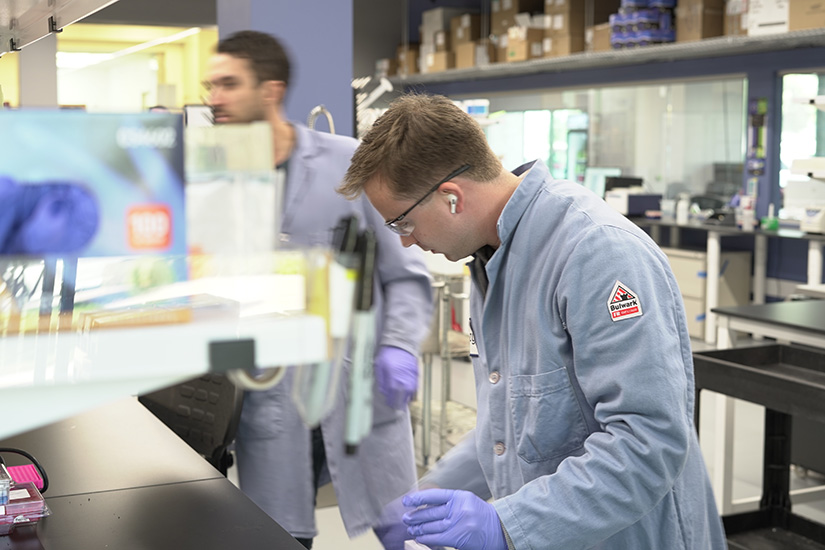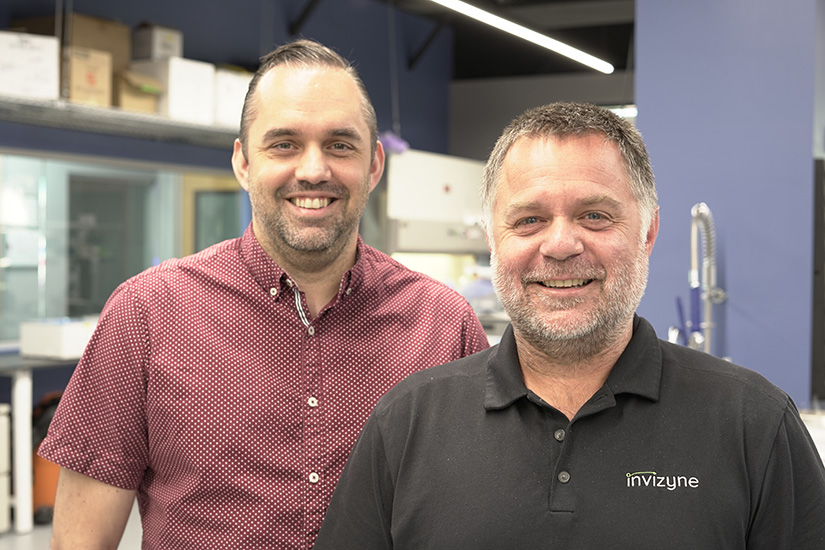With NREL's Help, GCxN Company Readies for Initial Public Offering

While reading papers describing the use of enzymes to transform materials into biofuels as an alternative to using microbes, National Renewable Energy Laboratory (NREL) research group leader Yannick Bomble first came across the eventual founders of Invizyne. Back then, Invizyne was not a company yet, but now Invizyne is at the stage where it is preparing an initial public offering (IPO), the first company from the Shell GameChanger Accelerator Powered by NREL (GCxN) program to do so.
“They have what they need to grow and what they need to make their biocatalysis process viable,” Bomble said. “They need to scale this technology up to show people that this works. I do think their technology is broadly applicable. They are doing the right thing, and they just need that little help. I believe they have a really good chance to succeed with their technology and the IPO.”
Using enzymes instead of microbes allows Invizyne to focus on the specific enzyme pathways that make the biofuels, instead of trying to control the thousands of other things cells do. This means that Invizyne is in engineering-level control of optimizing the enzymes derived from biology, which are renewable and green, to replace materials derived from petroleum.
“Enzymes are the small work horses inside of cells that make stuff happen,” Invizyne CEO Michael Heltzen said. “Knowing and focusing on just the enzymes involved, we can then do all kinds of fancy things from an engineering point of view.”
Many companies wait until they are at a much later stage for an IPO, but Invizyne decided to start the process while the company is still in early stage to boost funding.
“The railroads in the U.S. were started with public venture money,” Heltzen said. “Getting out and being publicly owned has some advantages. This is the equivalent of a B-round raise. The capital behind us owns its own law firm, and this is the 17th time that they backed a startup engaged in an early IPO.”

Invizyne is in engineering-level control of optimizing the enzymes derived from biology, which are renewable and green, to replace materials derived from petroleum. Photo from Invizyne
“It’s ambitious and audacious at the same time, which has been a great experience to be a part of,” said Tyler Korman, vice president of research for Invizyne.
One of the first things Invizyne is focusing on is isobutanol, a second-generation biofuel similar but in many ways superior to ethanol. Enzymes allow the company to avoid using petroleum for the manufacture of isobutanol.
“With enzymes, you can make them much more stable and efficient and do that engineering faster than dealing with living microbes," Korman said. “The long-term goal is to focus on sustainable aviation fuel, but it’s going to take time and infrastructure investments before it will be commonly used in planes. At the end of the day, you’re also trying to lower the whole carbon intensity, so we will start with smaller stepping-stone markets first, and that will then lead to sustainable aviation fuel.”
After reaching out to Invizyne, Bomble recommended the team apply for GCxN. The GCxN program partners early-stage companies with the resources, expertise, and world-class facilities available at NREL to speed disruptive technology to the market.
“We’re asking NREL to figure out what the overall costs of energy are for our process,” Korman said. “What are the metrics that we need to hit to develop this pipeline? We want to be cost competitive and energy efficient. In addition to providing some technical expertise based on some things we are setting up, we can also leverage the years of experience that NREL has.”

Invizyne CEO Michael Heltzen (left) and Vice President of Research Tyler Korman (right) in the Invizyne lab. Photo from Invizyne
Besides helping to estimate the overall costs and energy of the process, Bomble and the rest of his team at NREL will help Invizyne define different separation techniques the startup can use. According to Bomble, separation can make or break the process, and it is a key to making it viable. Additionally, NREL will also help identify other bottlenecks that may be present in the biocatalysis process.
“I’m excited about the technology,” Bomble said. “It’s definitely revolutionary, in my opinion, in the way they’ve been able to do it. They’re really open about what they do and what they find out. They share their results with us in real time so we can advance together more quickly.”
Now, Invizyne will continue to develop the technology with an eye on scaling and broadening the types of things it can do with enzymes.
“We don’t see the IPO as an exit,” Heltzen said. “We see it as going to the next level. We don’t see this as a finish line; we see this as a start line for a marathon.”
Learn more about NREL’s technology incubation programs.
Last Updated May 28, 2025
